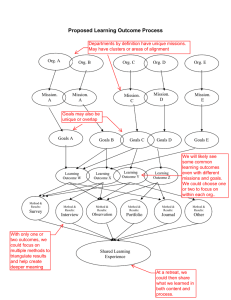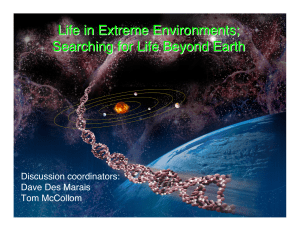Planetary Protection Considerations for Life Support and Habitation Systems
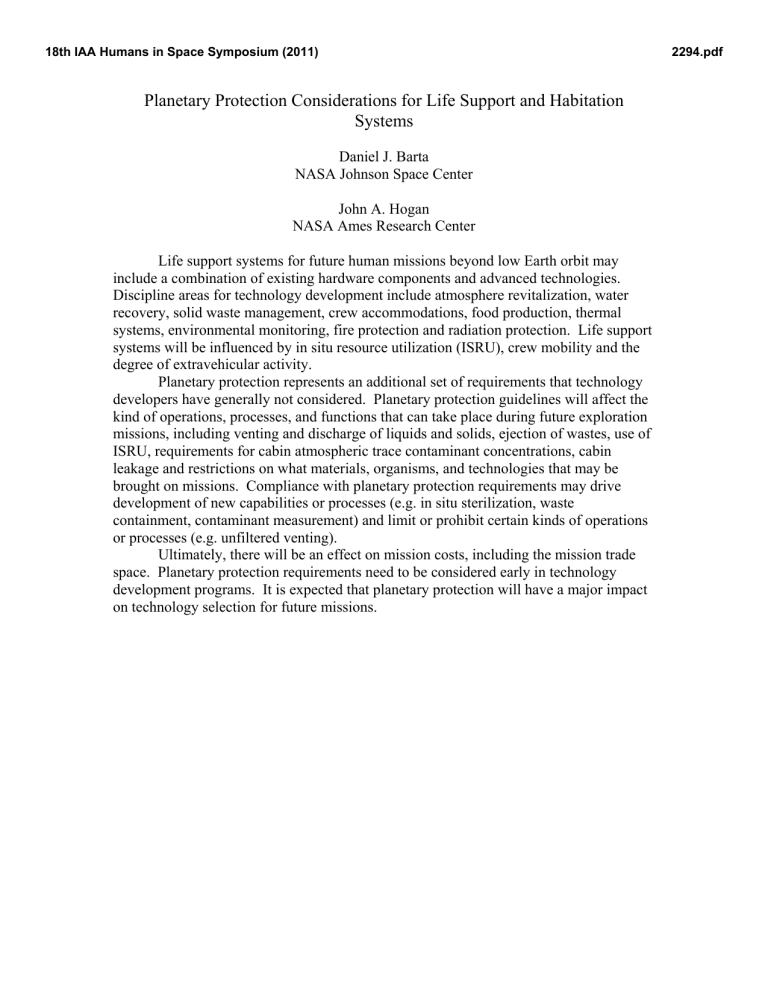
18th IAA Humans in Space Symposium (2011)
Planetary Protection Considerations for Life Support and Habitation
Systems
Daniel J. Barta
NASA Johnson Space Center
John A. Hogan
NASA Ames Research Center
Life support systems for future human missions beyond low Earth orbit may include a combination of existing hardware components and advanced technologies.
Discipline areas for technology development include atmosphere revitalization, water recovery, solid waste management, crew accommodations, food production, thermal systems, environmental monitoring, fire protection and radiation protection. Life support systems will be influenced by in situ resource utilization (ISRU), crew mobility and the degree of extravehicular activity.
Planetary protection represents an additional set of requirements that technology developers have generally not considered. Planetary protection guidelines will affect the kind of operations, processes, and functions that can take place during future exploration missions, including venting and discharge of liquids and solids, ejection of wastes, use of
ISRU, requirements for cabin atmospheric trace contaminant concentrations, cabin leakage and restrictions on what materials, organisms, and technologies that may be brought on missions. Compliance with planetary protection requirements may drive development of new capabilities or processes (e.g. in situ sterilization, waste containment, contaminant measurement) and limit or prohibit certain kinds of operations or processes (e.g. unfiltered venting).
Ultimately, there will be an effect on mission costs, including the mission trade space. Planetary protection requirements need to be considered early in technology development programs. It is expected that planetary protection will have a major impact on technology selection for future missions.
2294.pdf
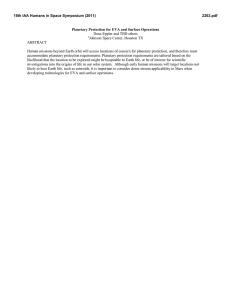
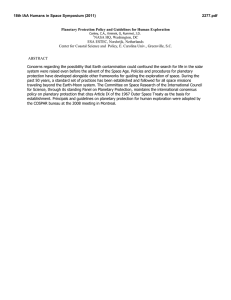
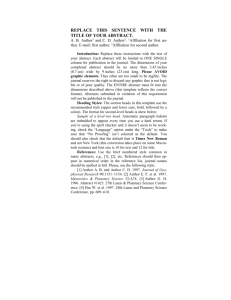
![Wednesday, April 13, 2011 PLANETARY PROTECTION AND ASTROBIOLOGY PANEL [#2053]](http://s2.studylib.net/store/data/014555840_1-6c9a28d92e63e65082da76842f8c4375-300x300.png)
